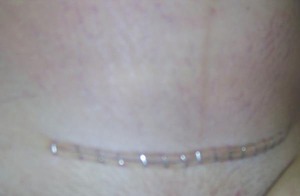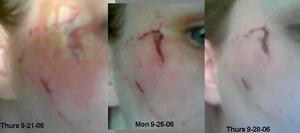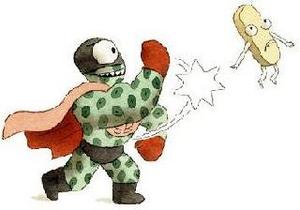Cesarean sections may seem simple enough, but there are many different ways that they can be performed and the scars left by the cesarean vary greatly. The direction and type of scar a woman has may affect her ability to birth vaginally with subsequent pregnancies. The scars that deviate from the typical low-transverse are often referred to as special scars.
Direction of A Cesarean Section
A cesarean section can be performed in one of two directions; vertically or horizontally.
Cesareans had been performed vertically for a long time because physicians believed that it allowed for additional room for delivery. Later, they realized that the woman was able to heal better with a smaller opening. In a vertical cesarean, a straight line, with one end pointing at the woman’s head, and one end pointing at the woman’s feet was cut into the woman’s abdomen. The incision may be above the navel, below the navel, or may begin above the navel and end below the navel. This incision is often referred to as a “classical cesarean,” but is also known as a midline-vertical incision. In modern obstetric practice, a vertical cesarean is reserved for special circumstances only, such as an extremely premature baby, in which case, the uterus is thinner at the top and the baby can be more easily accessed through a vertical cesarean. Vertical cesarean scars are more likely to rupture during labor with subsequent children.
For the last few decades, the majority of cesareans have been performed horizontally across the lower portion of the uterus, which is significantly thinned out in late pregnancy. This type of cesarean has fewer complications, such as blood clots or hemorrhage. This type of incision is also easier and quicker to heal from than a vertical incision. A horizontal cesarean is performed a centimeter or two above the pubic bone and is often referred to as a “bikini cut.” A horizontal cesarean may also be referred to as a low-transverse cesarean or a Monroe-Kerr incision. Horizontal cesarean scars are less likely to rupture during labor with subsequent children.
Scar Types
There are only two directions for a cesarean section, but there are several different types of scars that may remain on the uterus as a result of the incision.
An “inverted T” scar occurs when a low-transverse incision is made into the uterus, but then a second incision is made vertically into the uterus from the center of the low-transverse incision. This second incision can very greatly in length. The resulting scar then looks like an upside down, or inverted T.
Another type of incision is a “J-shaped” incision. This type of incision begins as a low-transverse, but a second incision is added to one end of the low-transverse incision, creating a J-shaped scar. The length of the vertical incision varies greatly.
An “upright T” happens when the surgeon begins with a low-transverse incision, but then makes a vertical incision going down from the initial incision, extending towards the woman’s vagina.
Something called an “extension” may be used to describe a uterine incision. An extension occurs once the surgeon has stopped using cutting instruments and separated the tissues with his or her hands while pulling the baby out, thus “extending” the scar. An extension can be thought of as similar to a tear.
References
Birth After Special Scars
What Type of Abdominal Incision is Used in a C-Section?
The C-Section Procedure







